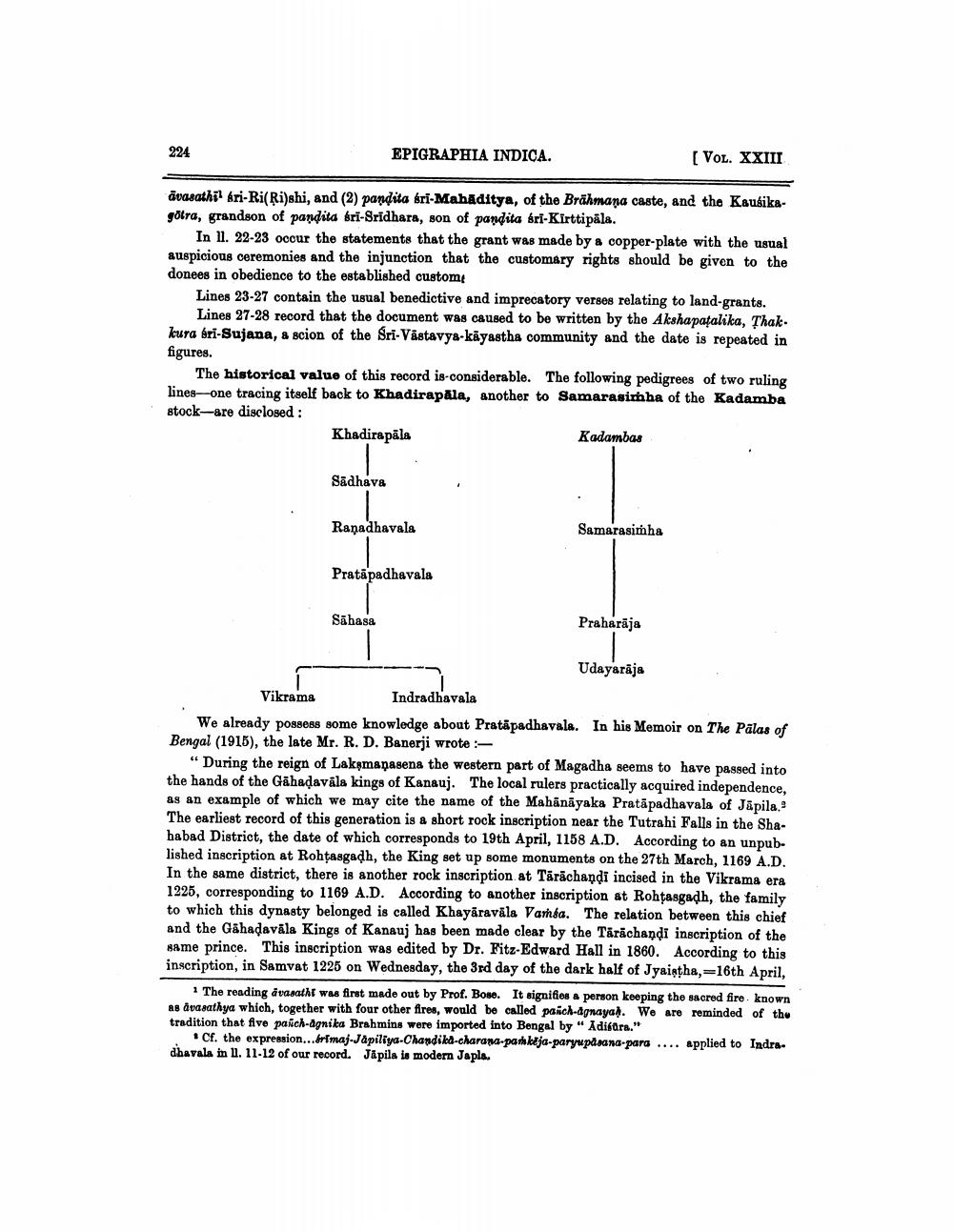________________
224
EPIGRAPHIA INDICA.
(VOL. XXIII
avasathil sri-Ri(Ri)shi, and (2) pandita sri-Mahāditya, of the Brähmana caste, and the Kausikagotra, grandson of pandita sri-Sridhara, son of pandita sri-Kirttipala.
In 11. 22-23 occur the statements that the grant was made by a copper-plate with the usual auspicious ceremonies and the injunction that the customary rights should be given to the donees in obedience to the established custome
Lines 23-27 contain the usual benedictive and imprecatory verses relating to land-grants.
Lines 27-28 record that the document was caused to be written by the Akshapatalika, Thakkura bri-Sujana, & scion of the Sri-Vastavya-kayastha community and the date is repeated in figures.
The historical value of this record is considerable. The following pedigrees of two ruling lines-one tracing itself back to Khadirapala, another to Samarasimha of the Kadamba stock-are disclosed : Khadirapāla
Kadambas
Sadhava
Ranadhavala
Samarasimha
Pratápadhavala
Sāhasa
Praharaja
Udayarāja
Vikrama
Indradhavala We already possess some knowledge about Pratäpadhavala. In his Memoir on The Palas of Bengal (1915), the late Mr. R. D. Banerji wrote
"During the reign of Lakamanasena the western part of Magadha seems to have passed into the hands of the Gähadavala kings of Kanauj. The local rulers practically acquired independence, as an example of which we may cite the name of the Mahānāyaka Pratápadhavala of Jäpila. The earliest record of this generation is a short rock inscription near the Tutrahi Falls in the Shahabad District, the date of which corresponds to 19th April, 1158 A.D. According to an unpublished inscription at Rohtasgadh, the King set up some monuments on the 27th March, 1169 A.D. In the same district, there is another rock inscription at Tärāchandi incised in the Vikrama era 1225, corresponding to 1169 A.D. According to another inscription at Rohtasgadh, the family to which this dynasty belonged is called Khayāravāla Vamsa. The relation between this chief and the Gáhadaväla Kings of Kanauj has been made clear by the Tärächandi inscription of the same prince. This inscription was edited by Dr. Fitz-Edward Hall in 1860. According to this inscription, in Samvat 1225 on Wednesday, the 3rd day of the dark half of Jyaintha,=16th April,
1 The reading avanath was first made out by Prof. Bose. It signifies a person keeping the sacred fire known as avasathya which, together with four other fires, would be called panch-ugnaya). We are reminded of thu tradition that five pañch-agnika Brahmins were imported into Bengal by " Adifora."
Cf. the expression...Almaj-Jäpiliya-Chandikd-charana-pash keja-paryupdaana-para .... applied to Indra. dhavala in 11. 11-12 of our record. Jäpila ia modern Japla.




